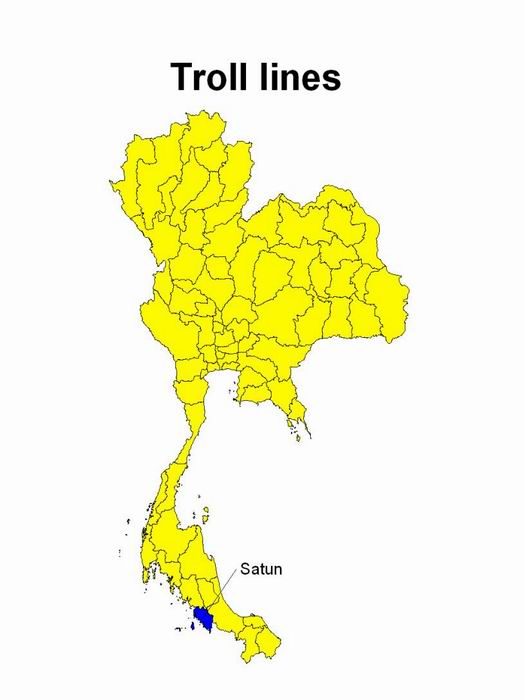Trolling
Trolling
is an old fishing technique, formerly quite popular in both
the Gulf of Thailand and the Andaman Sea. At present,
trolling still continues mainly on the Andaman side, where
the open sea still ensures good fishing grounds. Fishing
is done from 5-10 m long inboard-powered fishing boats. Two
5-6 m long bamboo, wooden or iron-pipe rods are fixed on
the sides of the boat, with 3-4 trolling lines fastened at
the tip and the middle of the rods. The fisherman,
who controls the boat from the stern, holds another line. In
all, four to five lines are operated simultaneously. One
line consists of 30-100 m of steel wire (08.-1.0 mm) joined
with a swivel to 3-6 m of nylon monofilament (1.1-1.2 mm),
plus 80-100 cm of stainless steel wire, ending in first an
ordinary hook and then a twisted hook. Fresh mackerel
is used as bait. Fishing is conducted preferably as
sunrise and sunset. The trolling speed is 3-5 knots. The
best fishing grounds are around islands, rocky underwater
hills, shoals and fish shelters. The most common catch
is Spanish mackerel, but the giant queen-fish, dolphin-fish,
bonito and barracuda are also caught. The gear can
be found on the west coast of southern Thailand, in Khuraburi
of Ranong, and Ban Pakbara of Satun province, and on the
eastern seaboard in the Gulf, in Chantaburi and Trat province. Crews
of trawler sometimes fish with trolling lines.
Squid
trolling is more popular among small scale fishermen target on bigfin reef
squid (Sepiotheutis lessoniana)

|